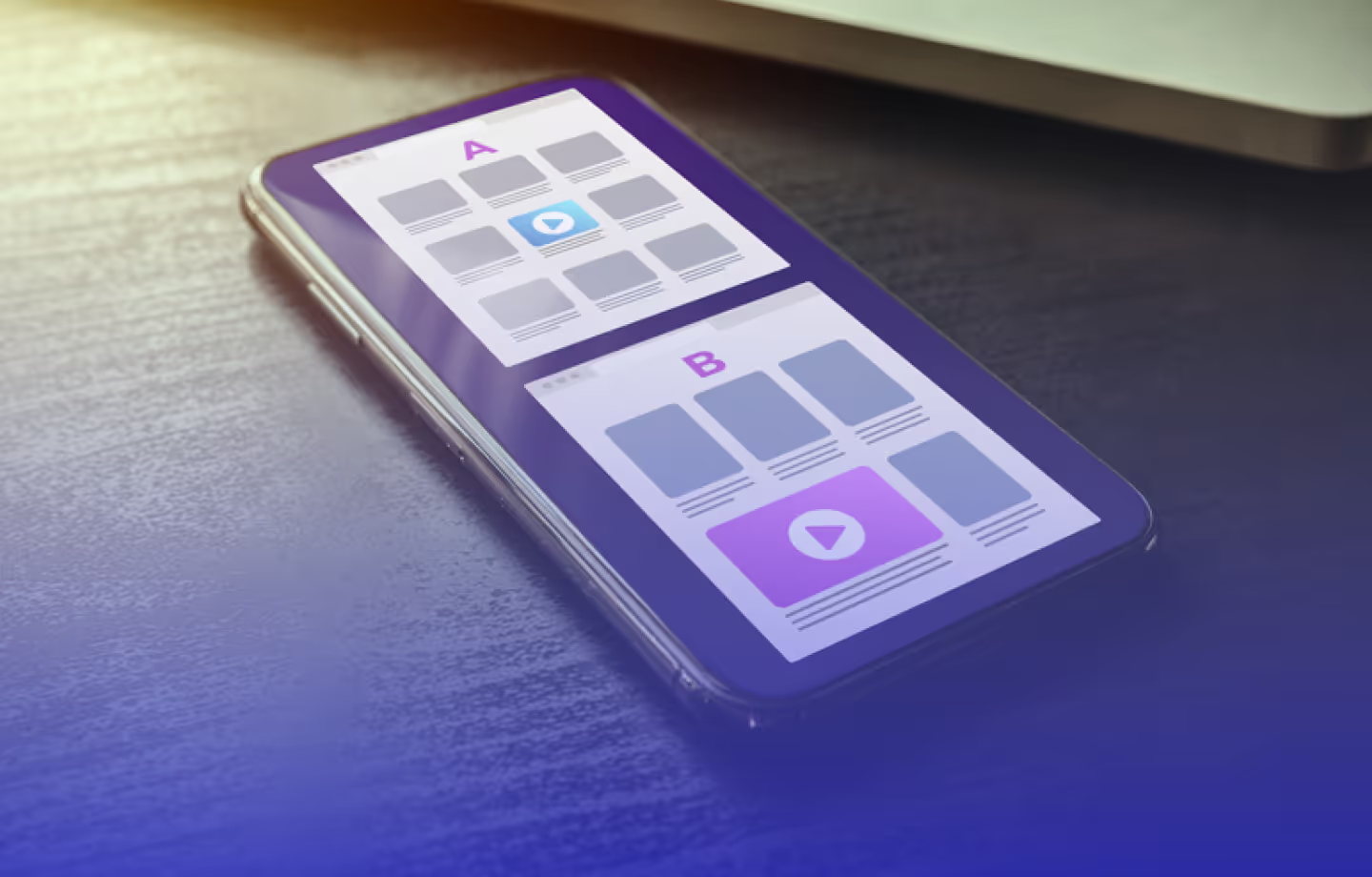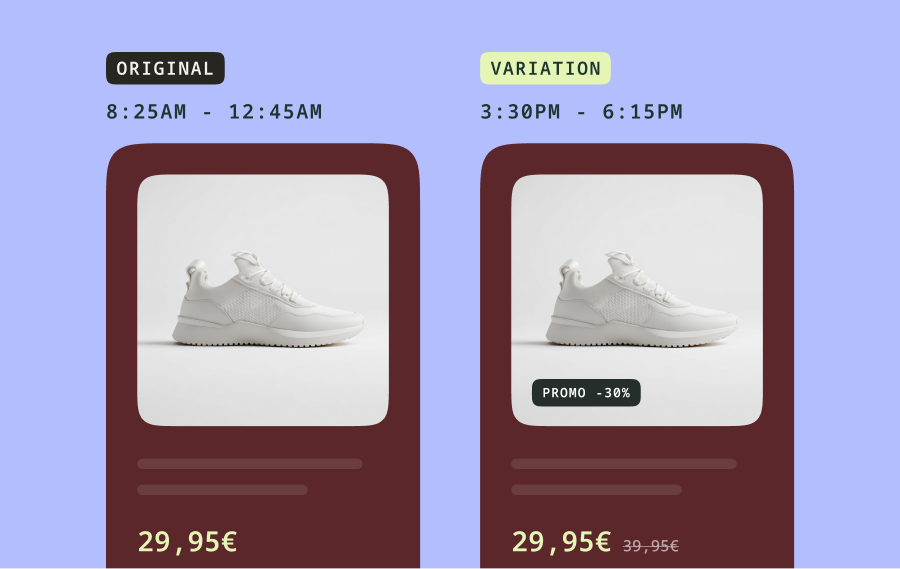How feature flags in SaaS empower all teams for faster, safer releases

Features are a key driver of SaaS growth, driving every stage of the conversion journey. An agile feature lifecycle that adapts quickly to user needs and market shifts directly impacts how fast your SaaS can scale.
One of the best ways to achieve this agility is through feature flagging. According to 2025 Kameleoon research, SaaS organizations are among the highest investors in feature experimentation, with 56% of leaders in the SaaS industry reporting a high level of investment in feature experimentation across marketing, product, and engineering teams to promote growth and innovation.
In this article, we will explore how feature flagging drives SaaS growth. We’ll also talk about feature experimentation and how these two concepts work together to bring all teams together and empower each to experiment in their own ways, breaking down silos and promoting SaaS growth.
5 ways feature flagging drives SaaS growth
1. Building a strong feature set—boosting consideration and evaluation
SaaS buyers compare feature sets down to the last detail. Enterprise customers in particular rely on strict procurement checklists to determine which solutions make the cut. If your product lacks key features, you won’t even make it to the shortlist.
Feature flagging accelerates feature velocity, enabling you to develop multiple features simultaneously and build a broad, competitive feature set—all without disrupting your live app. Here’s how:
- Parallel development. You can build features and keep shipping your feature code as you write it; your still-in-the-works features remain behind feature flags, without impacting your production environment.
- Deploy dark, release later. You can hide features from users until they are ready for rollout, ensuring a smoother launch.
- Continuous delivery becomes a reality. Your engineering team can ship incremental updates to your features/feature code and test them live with a controlled audience rather than waiting for a major release cycle.

2. Managing the feature lifecycle—handling feature failures and reducing technical debt
Not every feature is a success. Some add little value, others turn into costly failures, and many simply become outdated, cluttering your product. Without a structured way to manage them, your SaaS can accumulate technical debt that slows down innovation.
Feature flags give you full control over your feature lifecycle, allowing you to:
- Kill underperforming features instantly. If a feature isn’t gaining traction, turn it off without disrupting your product. Feature flags double up as “kill switches.”
- Sunset outdated features smoothly. Instead of abrupt removals, phase features out gradually to minimize user disruption.
- Reduce technical debt. Prevent dead code from piling up, making your product easier to maintain and scale.
3. Managing feature entitlements—boosting conversion and upgrades
Freemium attracts users, but it’s conversions that drive revenue. Many SaaS companies struggle with turning free users into paying customers, and features play a crucial role in the free-to-paid conversion journey.
Feature gating is the key. Premium features don’t just push users toward paid plans—they also reinforce pricing tiers and create opportunities for high-value upsells.
Feature flags help by:
- Converting trial users into paying customers by unlocking premium features temporarily to demonstrate their value, prompting trial users to upgrade.
- Support sales negotiations by enabling your sales and services teams to dynamically activate premium features to close deals or test enterprise functionality with key accounts.
- Encourage plan upgrades by gating high-value features behind higher-tier plans, incentivizing customers to move up-market.
4. Managing feature rollout—expanding into new markets, audience segments, and use cases
Whether you're expanding into new markets, industries, or customer segments, the right features determine how successfully you scale. But launching everywhere at once is risky.
Feature flags enable you to expand strategically with targeted rollouts, instead of launching globally. Your SaaS platform can use feature flags to vary regionally, enabling you to test demand before scaling. This also allows you to gradually roll out language support, compliance tools, and other region-specific integrations to new audiences, and validate new audiences before committing with serious developer time.
5. Orchestrating feature marketing campaigns—aligning software and marketing teams
Marketing can make or break a feature launch—but only if it's in sync with product development. Too often, SaaS teams release features before marketing is ready, leading to weak messaging and missed revenue opportunities. Feature flagging eliminates this gap, ensuring marketing and product teams are perfectly aligned:
- With feature flagging, your marketing team can test-drive a feature before launch, allowing them to craft messaging, create demos, and train sales teams ahead of time.
- Develop stronger marketing collateral. Early adoption data helps refine messaging, ensuring it reflects real user experience rather than just technical specifications.
- Launch with perfect timing; your product team can keep a feature hidden until the exact moment a marketing campaign goes live, ensuring an easy, high-impact launch.
“Traditional” feature flagging vs all-team (feature) experimentation
Feature flagging is primarily an engineering-led process, managing your SaaS feature’s technical lifecycle from development and testing to launch, release, adoption, or sunsetting.
Feature experimentation, on the other hand, builds on feature flagging, turning it into a company-wide, all-team, data-driven approach that ensures you only invest in features that deliver real value.
Why feature experimentation matters:
- Validate before you build. Instead of assuming a feature is valuable, test its impact with real users. Sometimes, this means launching a lightweight MVP before full development.
- Find the best version. Instead of launching a feature in a fixed form, A/B test different aspects of it like its UI, backend logic, or APIs, etc.
- Measure real business impact. Go beyond feature adoption metrics—analyze how a feature affects retention, revenue, and customer satisfaction before scaling. Instead of sinking your engineering resources into unvalidated features, prioritize development based on real data, ensuring a feature is worth building, optimizing, or scaling.

An all-team feature experimentation lifecycle in SaaS
All-team experimentation brings together product, engineering, and marketing teams to ensure every feature decision is backed by data. Here’s how it works in the SaaS world:
1. Hypothesis stage: Aligning insights and defining success
At this stage, teams come together to answer a critical question: Is this feature worth building? Product, engineering, and marketing align on the problem it solves, how success will be measured, and whether it’s worth investing in.
At this stage, you’ve built a clear feature experiment plan with defined test metrics and success criteria.
2. Build stage: Designing, developing, and setting up the experiment
Now, teams collaborate to create a functional prototype or MVP that’s ready for controlled testing.
At this stage, you’ve a test-ready feature with clear tracking, messaging, and user targeting in place.
3. Experimentation stage: Controlled rollout and validation
This is where the real-world testing begins: Your teams analyze feature performance and make data-driven decisions on whether to scale, refine, or kill the feature.
The results of your experimentation determine whether the feature is ready for full release, requires iteration, or should be abandoned.
Starting with feature flagging for your SaaS
Feature flagging gives your SaaS the agility to innovate faster, adapt to customer needs, and retain that edge. But unlocking true product success means going beyond flagging—it requires data-driven experimentation across unified teams to ensure every feature you launch drives measurable impact.
With Kameleoon, you get a fully integrated feature flagging and experimentation platform—helping your team ship smarter, iterate faster, and grow confidently.
Ready to start? Learn how Kameleoon can help your SaaS implement feature flagging and experimentation.




